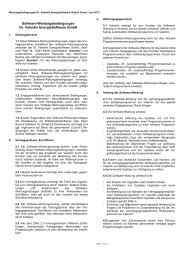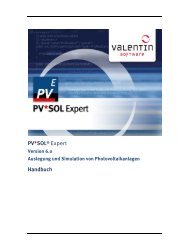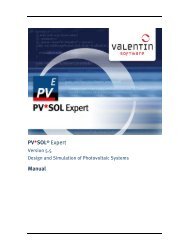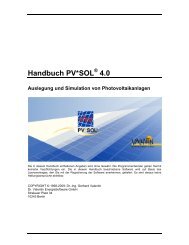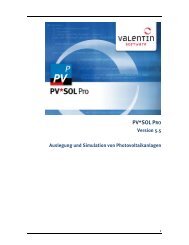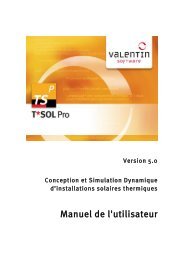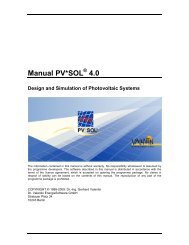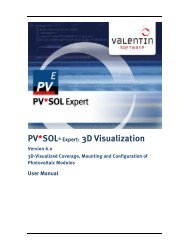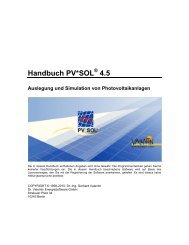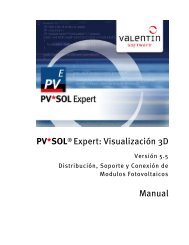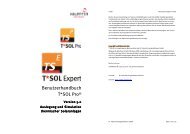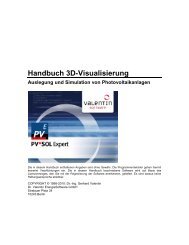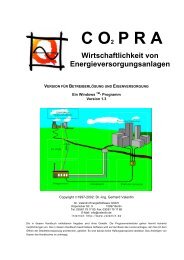Manual T*SOL basic 5.0 - Valentin Software
Manual T*SOL basic 5.0 - Valentin Software
Manual T*SOL basic 5.0 - Valentin Software
Create successful ePaper yourself
Turn your PDF publications into a flip-book with our unique Google optimized e-Paper software.
9 Results User <strong>Manual</strong> <strong>T*SOL</strong><br />
9 Results<br />
<strong>T*SOL</strong> offers you a wide range of ways to evaluate the simulation results.<br />
If changes have been made to the system since the last simulation, you will be advised of this and given<br />
the chance to run a new simulation.<br />
There is for each project a short presentation and a technical documentation.<br />
9.1 Project Report: Presentation<br />
The presentation contains the system schematic, the site data, and the main results of the annual<br />
simulation.<br />
If you have made changes to the system since the last simulation, a new simulation must first be run, in<br />
order to display the presentation.<br />
You can print<br />
At the top of the first page features the system schematic:<br />
The information listed includes the type, number, and orientation of collectors, the<br />
volumes of the tanks, the nominal power of the boiler, the outlet and inlet temperature of<br />
the heating loop (where necessary, split into radiator and underfloor heating), and the<br />
average daily consumption and DHW target temperature for DHW consumption.<br />
The results of the simulation are presented below:<br />
• Irradiation onto the collector surface area (absolute and per m²),<br />
• Energy from the collectors and the collector loop (absolute and per m²),<br />
• Energy supply, solar energy for DHW ( when space heating applies, referring to<br />
heating energy),<br />
• Auxiliary heating energy,<br />
• Fuel savings, CO2 emissions cut,<br />
• Solar fraction, efficiency,<br />
• Fraction of energy savings in accordance with DIN EN 12976.<br />
• If you have defined a Reference System under System Definition > System, the<br />
calculation of pollutants is reported for this system.<br />
Page 2: The parameters for location, DHW, and space heating are listed.<br />
The system components are listed by manufacturer, type, and key technical parameters.<br />
Page 3: shows a graph of the solar energy fraction of total consumption as well as the<br />
maximum daily temperatures in the collector.<br />
Page 4: The presentation features an energy balance schematic (Sankey Diagram) to<br />
display energy.<br />
• the presentation,<br />
page 81 / 104 Dr. <strong>Valentin</strong> Energie<strong>Software</strong> GmbH



